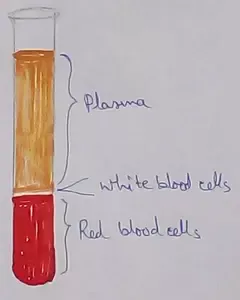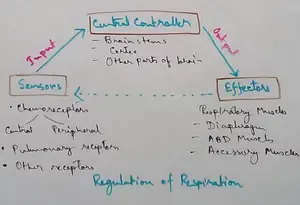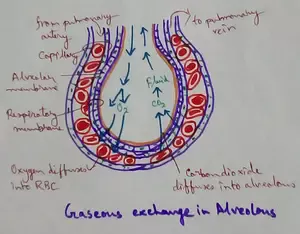Problems on Division of Fractional Numbers
This topic would deal with problems on division of fractional number. We are familiar with the fact that division of fraction with another fraction involves multiplying the fraction with the reciprocal or multiplicative inverse of another fraction. The same concept would be utilized in story sums or problems on division of fractional numbers.
Here are few examples:
1. Rita bought 4 kgs of sugar for Rs. 1702/5 . Find the cost of 1 kg of sugar.
Solution:
Cost of 4 kg of sugar = Rs. 1702/5
Cost of 1 kg of sugar = Rs. 1702/5 ÷ 4
= 1702/5 ÷ 4/1
= 852/5 × 1/4
= 213/5
Therefore, Cost of 1 kg of sugar = Rs 423/5
Explanation:
Cost of 4 kgs sugar is given and here the sum requires to find out the cost of each kg of sugar. We know that the cost of 1 kg of sugar would be less than the cost of 4 kg of sugar. Therefore this cost of 4kg of sugar has to be divided to find out the cost of 1kg of sugar. That means we have to do Rs. 1702/5 ÷ 4 to get the answer of each kg of sugar that is Rs 423/5
2. In a school 3/5 of the students are boys. If there are 600 girls in the school then find the number of boys in the school.
Solution:
Let the total no. of students be 1
Fraction of boys = 3/5
Fraction of girls = 1 – 3/5
= 2/5
Therefore, 2/5 of the students are girls = 600
Then total no. of students = 600 ÷ 2/5
=600 × 5/2
= 1500 students
Therefore, number of boys = 1500 – 600 = 900 girls
Explanation:
It is mentioned that in a school there are 600 girls and 3/5 of the students are boys. Here we assume the total no .of students be 1 as the total fraction is always considered as 1. Then if 3/5
Of the students are boys then we can easily say that 1 – 3/5 are girls. Now, this 2/5 is equivalent to 600 girls. Hence we need to find out the total no. of students first. Then from the total no. of students the no. of girls is subtracted to get the no. of boys.
3. A bar of chocolate of length 153/4 cm is divided into a number of pieces. Each piece is of 3/4 cm. Find the number of pieces of chocolate that can be cut from the bar of chocolate.
Solution:
Total length of a chocolate bar = 153/4 cm
Length of each piece of chocolate bar = 3/4 cm
Therefore, total no. of pieces that can be cut = 153/4 ÷ 3/4
= 63/4 × 4/3
= 21 pieces
Therefore, total no. of pieces that can be cut from the bar of chocolate = 21 pieces
Explanation:
Here the total length of the chocolate bar is 153/4 cm and the length of each piece is given as 3/4
cm. So we have to find out that this chocolate bar can be divided into how many pieces. So we have to divide 153/4 ÷ 3/4 to get the answer as 21 pieces
From Problems on Division of Fractional Numbers to HOME PAGE
Recent Articles
-
What Is Plasma? | Blood Plasma | Proteins | Nutrients | Cholesterol
Nov 07, 25 10:29 AM
Blood is a mobile fluid which is a connective tissue and is derived from the mesoderm like cell any other connective tissue. Colour of blood is reddish and that flows inside the blood vessels by means… -
Disorders of Respiratory System | Tuberculosis | Pleurisy | Emphysema
Oct 28, 25 11:39 PM
Tuberculosis is very common disease and is caused by a type of bacteria called Mycobacterium tuberculosis. This disease causes different trouble in the respiration and infection of several parts of th… -
Regulation of Respiration | Respiratory Centres | Inspiratory Area |
Oct 14, 25 12:13 AM
Respiratory Centre is the area that controls the rate of respiration and it is observed to be located in medulla oblongata and pons. Respiratory Centre has the following will dispersed components like… -
Explain Transport of Gases | External Respiration | Tissue Respiration
Oct 09, 25 11:35 PM
In humans gaseous exchange is completed in the following ways the steps are - External Respiration or Breathing - Breathing in false taking in of Oxygen and giving out of carbon dioxide in the body. M… -
Kind and Number of Teeth | Location of Teeth in Mouth | Care of Teeth
Sep 11, 25 12:52 AM
Kind and Number of Teeth






New! Comments
Have your say about what you just read! Leave me a comment in the box below.